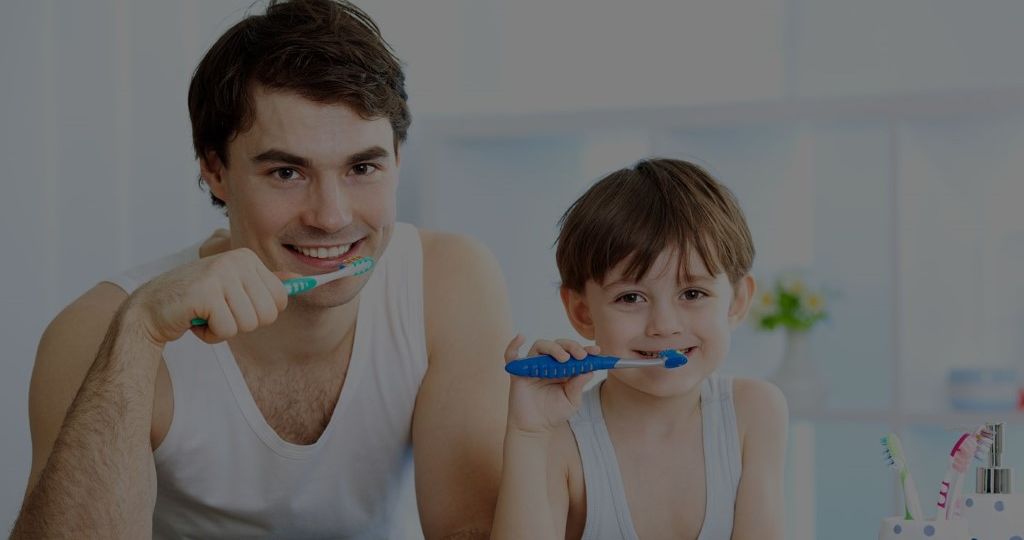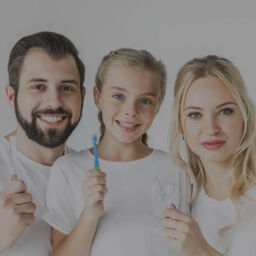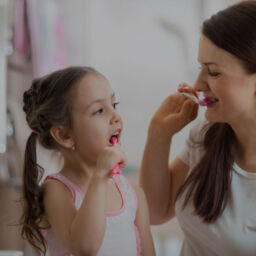
As a new parent, you have many questions. Many tasks, like oral hygiene, are obvious to you as an adult—but how do you teach them to your kids? Which ones, for that matter, do you need to teach now and which should come later?
Questions like, “How often should we brush baby teeth?” or “How much toothpaste is enough?” are simple, yet if you haven’t asked them before stepping up to the sink with your toddler you may find yourself overwhelmed.
Here are a few tips about oral hygiene every parent should know when it comes to dental health.
Brush at Least Twice a Day
Your children should be brushing their teeth, just as you should, for two minutes twice a day—once in the morning and once before bed. It may be difficult to get your child interested in brushing, especially when there are more interesting toys in the playroom, but regular brushing is the best step toward great oral health.
Try getting a toothbrush with your child’s favourite character on it. Even better, let your child pick it out at the store. This goes a long way to making brushing fun and making your child feel in charge of their dental health. Another great technique is to brush your teeth together; nothing goes further to encouraging oral hygiene than leading by example.
First Dental Visit
A common question is, “When should I first take my child to the dentist?” The answer often surprises people: within the first year or within six months of the first tooth coming in. Studies are showing that preschoolers are getting more cavities than before, so it’s never too early to get your child accustomed to good oral hygiene.
Some children are also getting orthodontics at much earlier ages. Adult teeth start to come in around age six. If orthodontic problems become apparent, this is a great time to take measures as the jaw is still growing and orthodontic issues can be corrected early.
How to Brush
As soon as your child grows a tooth, it’s time to start brushing! There are smaller toothbrushes designed for children of all ages. The toothbrush you use should be soft and its size and shape should allow your child to reach all areas within the mouth. When still an infant, you’ll want to use only a smear of toothpaste (about the size of a grain of rice) on a soft-bristled brush.
Around age three, you can start using a pea-sized amount of toothpaste (fluoride preferred). Search around for a flavour your child enjoys. As soon as your child can grasp the concept, get them to rinse and spit (instead of swallowing the toothpaste).
When it comes to brushing motion, direction doesn’t really matter. The most important thing is to clean each tooth thoroughly. This includes top and bottom, inside and out.
You should be monitoring your child’s brushing until eight years of age.
Healthy Diets
More preschoolers are getting cavities is because there are many sugary foods out there. Along with daily brushing to remove the build-up of plaque, you should be limiting the amount of starchy, sticky, and sugary foods your children are eating.
Developing good eating habits early means your child is likely to carry them forward into adulthood. Rather than having sugary treats as snacks, get your children accustomed to vegetables or fruits. Sugary snacks are best when eaten as part of a larger meal, as more saliva will help wash sugar out of the mouth.
When it comes to oral hygiene for your children, it’s not much different than your own. Be the best example to your child and commit to a good oral hygiene routine and your children will follow.








